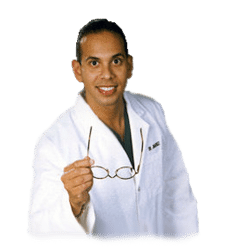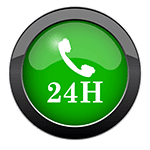Although the cerebellum has many responsibilities, its central function is to coordinate and handle motor activities. Balance, coordination, posture, equilibrium and eye motion are controlled in part by the cerebellum. Additionally, it works to calibrate motor actions in order for our movements to have a smooth, flowing nature to them. The cerebellum receives data from various other structures, like the inner ear and the vestibular system, and fine-tunes incoming sensorimotor information to achieve naturally smooth movements.
Contents
Cerebellum Exercises
Many cerebellum exercises are available which help the cerebellum enhance the operation of its neurons. Essentially, neurons want stimulation to be able to function accordingly. When neurons do not get enough stimulation, they become unstable, which can lead to a lot of behavioral difficulties, such as the ones connected with ADHD, among others. But, exercising the cerebellum can increase operation as well as decrease negative symptoms.
Exercises that require focused attention are demonstrated to help cerebellar development. Deliberate and purposeful physical movements, such as balancing on a balance board or working with a rehabilitation ball, will help neurons get the stimulation they need to maximize their functioning. Because there’s a substantial connection between physical activity and mental functioning, pairing physical tasks with psychological exercises is also very beneficial towards enhancing cerebellar functioning. By way of instance, a child diagnosed with ADHD may be requested to keep their balance on a balance board whilst simultaneously reciting the alphabet.
If a child or individual demonstrates weak cerebellar development in one quadrant, doing physical exercises between the legs and arms on the exact same side of the body is able to help that portion of the cerebellum “catch up” to the level of development of it’s other half. These exercises might involve arm or leg stretches or complex motions that include the hands, wrists, elbows and shoulders. Vestibular-based actions, such as catching and throwing a ball or performing balance exercises such as standing on one leg, are also great cerebellum exercises that ease the stabilization, growth and development of neurons.
Cerebellar rehabilitation programs incorporate each of these exercises into an extensive regimen for tapping into the brain’s neuroplasticity. The exercises involved require patients to perform tasks that involve balance, spatial judgments, and motor actions, all which enhance cerebellar functioning and operation. Basically, since the brain’s neural networks arrange the incoming sensory information, they improve their functioning and become more effective.

Dr. Alex Jimenez’s Insight
Cerebellar ataxia is a disorder which affects the normal functioning of the brain and the nervous system by decreasing balance and coordination, most commonly in the back, arms and legs. Cerebellar rehabilitation exercises are often utilized to help alleviate the symptoms associated with cerebellar ataxia. Cerebellar exercises can also be recommended by a chiropractor or physical therapist for children and individuals in order to stimulate the brain and help with cerebellar development. Participating in cerebellar exercises has been demonstrated to improve balance, coordination and posture as well as promote more natural and smooth motor activities.
Many cerebellar exercises can be utilized in order to help stimulate specific regions of the brain, particularly the cerebellum. Each zone of the cerebellum is in charge of performing essential functions, therefore, enhancing these different regions is fundamental towards ultimate function and operation. Below, a series of exercises have been divided to enhance specific zones of the cerebellum.
General Cerebellar Exercises
- Spinning in a desk seat can stimulate the ipsilateral cerebellum
- Vertical muscle stretch can stimulate the ipsilateral cerebellum
- Squeezing a tennis ball can stimulate the ipsilateral cerebellum
- Passive or active non-linear complex movements can stimulate the ipsilateral cerebellum
- Finger to nose extending can stimulate the ipsilateral cerebellum
Vermal and Paravermal Exercises
- Passive and active gaze stabilization exercises using central fixation
- Wobble board/unsteady surface exercises
- Balance beam exercises and tandem walking
- Bouncing a ball against the floor or throwing it against the wall
- Core exercises, such as planks, sit-ups and yoga
- Learning how to balance on a bicycle
- Supine cross crawl action
Lateral Cerebellum Exercises
- Cognitive procedures
- Learning a musical instrument
- Tracing a maze
- Playing “catch”
- Tapping fingers/hand or toes/feet to the beat of a metronome
- Seeking to compose with eyes shut
- Strategic board games
Cerebellar Rehabilitation Exercises for Cerebellum Dysfunction
When the cerebellum is damaged or not fully developed, individuals can display erratic or slow movements, demonstrate an inability to judge distance, have difficulty performing rapid moves, and walk with an unnatural gait. Dysfunction from the cerebellum have also been linked to symptoms of ADHD and other behavioral disorders. Cerebellar rehabilitation exercises can be helpful towards enhancing the indications of cerebellum dysfunction, most commonly, cerebellar ataxia.
Cerebellar ataxia is a disease which originates from the cerebellum. Cerebellar ataxia can happen as a result of several ailments and presents with symptoms of an inability to coordinate balance, gait, upper/lower extremity and eye motions. Healthcare professionals frequently use visual monitoring of people performing motor tasks so as to look for signs of ataxia. Research studies have shown that cerebellar rehabilitation exercises can be helpful towards improving symptoms related to cerebellum dysfunction.
Exercises for Cerebellar Dysfunction
Treatment of cerebellar ataxia generally involves treating the underlying illness in addition to the symptoms. Cerebellar rehabilitation exercises are used to improve balance and increase the independence of the patient using methods focusing on balance, posture and coordination control. Stabilizing the back and proximal muscles ought to begin with mat activities, like moving onto the forearms out of a lying face down position and crawling/moving onto the knees into a sitting posture. Gait training should also be performed, since it’s an excellent indicator of balance and insertion.
Cerebellar rehabilitation exercises for cerebellum dysfunction can also improve proprioception. Proprioception is controlled by the cerebellum and involves knowing which body parts are situated in space and in connection with each other. Treatment entails plyometric exercises, balance board and mini trampoline exercises. Vibration and match treatment can also be utilized to enhance proprioception, posture and movement. Yoga and other body-awareness exercises might also be included in the treatment plan to increase proprioception.
Rehabilitation goals include enhancing balance and posture against external stimuli, increasing joint stabilization as well as creating independent, practical gait to promote independence. Training principles include progressing from simple to complicated exercises and providing support with home exercise and sports activities. Cerebellar rehabilitation exercises should be prescribed by a healthcare professional who specializes in cerebellum dysfunction, such as a chiropractor or physical therapists. The language of the brain is repetition, and rehabilitation can enhance brain function. The scope of our information is limited to chiropractic as well as to spinal injuries and conditions. To discuss the subject matter, please feel free to ask Dr. Jimenez or contact us at 915-850-0900 .
Curated by Dr. Alex Jimenez
Additional Topics: Sciatica
Sciatica is medically referred to as a collection of symptoms, rather than a single injury and/or condition. Symptoms of sciatic nerve pain, or sciatica, can vary in frequency and intensity, however, it is most commonly described as a sudden, sharp (knife-like) or electrical pain that radiates from the low back down the buttocks, hips, thighs and legs into the foot. Other symptoms of sciatica may include, tingling or burning sensations, numbness and weakness along the length of the sciatic nerve. Sciatica most frequently affects individuals between the ages of 30 and 50 years. It may often develop as a result of the degeneration of the spine due to age, however, the compression and irritation of the sciatic nerve caused by a bulging or herniated disc, among other spinal health issues, may also cause sciatic nerve pain.

EXTRA IMPORTANT TOPIC: Chiropractor Sciatica Symptoms
MORE TOPICS: EXTRA EXTRA: El Paso Back Clinic | Back Pain Care & Treatments
General Disclaimer, Licenses and Board Certifications *
Professional Scope of Practice *
The information herein on "Cerebellar Rehabilitation Exercises in El Paso, TX" is not intended to replace a one-on-one relationship with a qualified health care professional or licensed physician and is not medical advice. We encourage you to make healthcare decisions based on your research and partnership with a qualified healthcare professional.
Blog Information & Scope Discussions
Welcome to El Paso's Premier Wellness and Injury Care Clinic & Wellness Blog, where Dr. Alex Jimenez, DC, FNP-C, a Multi-State board-certified Family Practice Nurse Practitioner (FNP-BC) and Chiropractor (DC), presents insights on how our multidisciplinary team is dedicated to holistic healing and personalized care. Our practice aligns with evidence-based treatment protocols inspired by integrative medicine principles, similar to those on this site and on our family practice-based chiromed.com site, focusing on naturally restoring health for patients of all ages.
Our areas of multidisciplinary practice include Wellness & Nutrition, Chronic Pain, Personal Injury, Auto Accident Care, Work Injuries, Back Injury, Low Back Pain, Neck Pain, Migraine Headaches, Sports Injuries, Severe Sciatica, Scoliosis, Complex Herniated Discs, Fibromyalgia, Chronic Pain, Complex Injuries, Stress Management, Functional Medicine Treatments, and in-scope care protocols.
Our information scope is multidisciplinary, focusing on musculoskeletal and physical medicine, wellness, contributing etiological viscerosomatic disturbances within clinical presentations, associated somato-visceral reflex clinical dynamics, subluxation complexes, sensitive health issues, and functional medicine articles, topics, and discussions.
We provide and present clinical collaboration with specialists from various disciplines. Each specialist is governed by their professional scope of practice and their jurisdiction of licensure. We use functional health & wellness protocols to treat and support care for musculoskeletal injuries or disorders.
Our videos, posts, topics, and insights address clinical matters and issues that are directly or indirectly related to our clinical scope of practice.
Our office has made a reasonable effort to provide supportive citations and has identified relevant research studies that support our posts. We provide copies of supporting research studies upon request to regulatory boards and the public.
We understand that we cover matters that require an additional explanation of how they may assist in a particular care plan or treatment protocol; therefore, to discuss the subject matter above further, please feel free to ask Dr. Alex Jimenez, DC, APRN, FNP-BC, or contact us at 915-850-0900.
We are here to help you and your family.
Blessings
Dr. Alex Jimenez DC, MSACP, APRN, FNP-BC*, CCST, IFMCP, CFMP, ATN
email: coach@elpasofunctionalmedicine.com
Multidisciplinary Licensing & Board Certifications:
Licensed as a Doctor of Chiropractic (DC) in Texas & New Mexico*
Texas DC License #: TX5807, Verified: TX5807
New Mexico DC License #: NM-DC2182, Verified: NM-DC2182
Multi-State Advanced Practice Registered Nurse (APRN*) in Texas & Multi-States
Multi-state Compact APRN License by Endorsement (42 States)
Texas APRN License #: 1191402, Verified: 1191402 *
Florida APRN License #: 11043890, Verified: APRN11043890 *
License Verification Link: Nursys License Verifier
* Prescriptive Authority Authorized
ANCC FNP-BC: Board Certified Nurse Practitioner*
Compact Status: Multi-State License: Authorized to Practice in 40 States*
Graduate with Honors: ICHS: MSN-FNP (Family Nurse Practitioner Program)
Degree Granted. Master's in Family Practice MSN Diploma (Cum Laude)
Dr. Alex Jimenez, DC, APRN, FNP-BC*, CFMP, IFMCP, ATN, CCST
My Digital Business Card
Licenses and Board Certifications:
DC: Doctor of Chiropractic
APRNP: Advanced Practice Registered Nurse
FNP-BC: Family Practice Specialization (Multi-State Board Certified)
RN: Registered Nurse (Multi-State Compact License)
CFMP: Certified Functional Medicine Provider
MSN-FNP: Master of Science in Family Practice Medicine
MSACP: Master of Science in Advanced Clinical Practice
IFMCP: Institute of Functional Medicine
CCST: Certified Chiropractic Spinal Trauma
ATN: Advanced Translational Neutrogenomics
Memberships & Associations:
TCA: Texas Chiropractic Association: Member ID: 104311
AANP: American Association of Nurse Practitioners: Member ID: 2198960
ANA: American Nurse Association: Member ID: 06458222 (District TX01)
TNA: Texas Nurse Association: Member ID: 06458222
NPI: 1205907805
| Primary Taxonomy | Selected Taxonomy | State | License Number |
|---|---|---|---|
| No | 111N00000X - Chiropractor | NM | DC2182 |
| Yes | 111N00000X - Chiropractor | TX | DC5807 |
| Yes | 363LF0000X - Nurse Practitioner - Family | TX | 1191402 |
| Yes | 363LF0000X - Nurse Practitioner - Family | FL | 11043890 |









